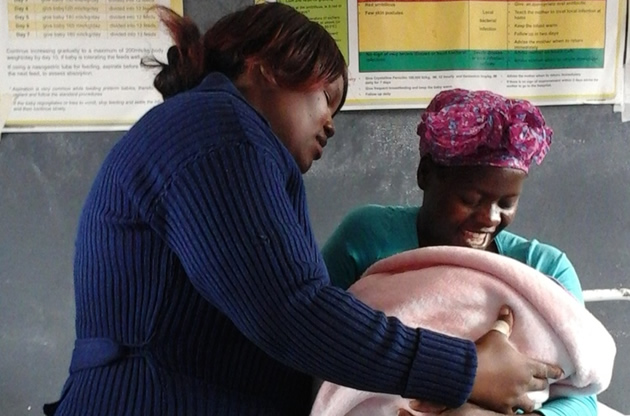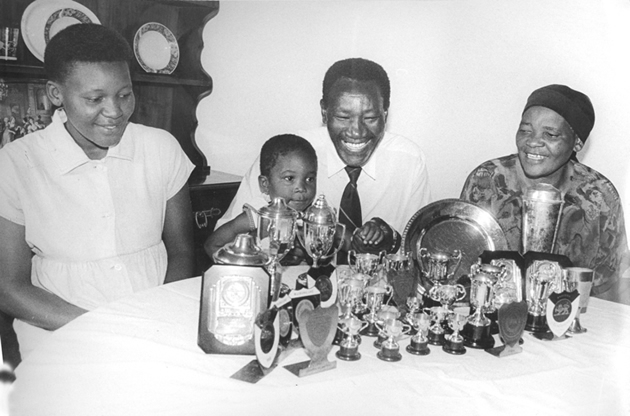Waiting homes critical in maternal mortality fight

Roselyne Sachiti
Sekai Kurai (30) is a woman from Village 4, Chizvirizvi, in Chiredzi. A mother of one child aged three from her previous marriage, Kurai is expecting her second baby – due anytime.
She is one of eight women staying at the mothers’ waiting homes at Chizvirizvi clinic, a few kilometres from Chiredzi town in the southern part of Zimbabwe.
Despite clinic regulations that no young children are allowed to stay at the mothers’ waiting homes for fear of contracting diseases, Kurai has brought along her three-year-old son who spends the day under the care of other pregnant women.
At almost 36 weeks she has checked in at the waiting home, but not yet sought medical attention as her son refuses to remain behind.
“I am the third wife in a polygamous union and would not risk leaving him behind. My husband and his other two wives ill-treat him even in my presence. I cannot take him to my parents’ home because my new husband has not yet paid lobola (bride price). The boy’s father is in South Africa and I have lost contact with him.
“I do not know what I will do once I go into labour since he refuses to remain with anyone. This worries me and I almost decided to give birth at home,” she says.
The three-year-old is not her only problem. She does not have sufficient food during her stay at the waiting shelter.
“I just watch others whose husbands are in South Africa feast. When pregnant you sometimes crave for other people’s food and it is harder when you do not have your own. The other ladies here sometimes give me food,” she adds.
Several other women at the waiting shelter also say they face similar challenges of not having enough food supplies.
Most mothers’ waiting shelters in Zimbabwean hospitals and clinics provide food like mealie-meal, sugar and beans but it is never enough to satisfy the pregnant mothers. Sometimes the supplies run out and women are required to provide for themselves.
The women are also expected to cook their own food. Some are lucky to have relatives who help with the cooking.
Women like Tambudzai Mashamba (32) from Village 7, Chipimbi, say despite the challenges, life experiences have taught her the importance of mothers’ waiting homes.
“I almost gave birth on my way to the clinic when I had my first baby a few years back. There were transport shortages that day and I stood on the roadside for about two hours while already feeling labour pains. I eventually got a ride and arrived at the clinic in the nick of time,” she said.
Shelter Mujaji (29), a mother of four from Village 3 Fairange Masekesa Village, just stayed away from mothers’ waiting homes when she had her two younger children because she had no one to leave them with.
“When I had my third child, I broke my waters on the way to the clinic and panicked. That is when I realised that I would die if I kept coming to the hospital late,” said the heavily pregnant Mujaji.
With most funding of the mothers’ waiting shelters coming from development partners like the United Nations Children’s Fund under programmes like the H4+ and the Health Transition Fund (HTF), among others, more needs to be done to ensure sustainability in the event that donors who are contributing to their running pull out.
Most of the funds have also helped refurbish the mothers’ waiting homes, buy blankets, and drill boreholes, amongst other uses.
Mothers’ waiting homes play a critical role in the reduction of maternal mortality as they help curb the three delays, which are delay in decision to seek care; delay in reaching care and delay in receiving adequate health care.
The direct and measurable causes of deaths in pregnancy and childbirth are mainly severe bleeding (mostly after childbirth), infections, high blood pressure during pregnancy (pre-eclampsia and eclampsia).
Figures from the World Health Organisation (2008) show that maternal haemorrhage was the third most likely cause of death for women in low income countries (behind only HIV/AIDS and tuberculosis), accounting for 58 000 deaths.
But with less money going towards food, most women say they are tempted not to use the mothers’ waiting homes which help reduce deaths in childbirth.
At clinics like Phahlela also in Chiredzi district, nurses like Siyananiso Shava have had to go out of their way to reach out to some pregnant women who live in places such as Makalani (34km) and Musukeve (30km) that are too far from the clinic.
It is such women that they reach out to so that they utilise the mothers’ waiting homes which were opened back in 1992.
Each Thursday, Shava goes on a long, uncomfortable motorbike ride to these villages to conscientise the women on the importance of using health facilities to stop the three delays and also test them for HIV/Aids.
“For example, we go to areas like Makanane every Thursday. This is because other women do not even come to register their pregnancies due to the long distances they have to walk. At 36 weeks, we advise them to come to mothers’ waiting homes. Such women usually come after the community outreach,” she said.
Then there are women who also do not come to access the mothers’ waiting homes because they have no one to leave their kids with at home.
With a population of 1 674 people accessing health services at Phahlela clinic, it is indeed a daunting task as the clinic only has two registered nurses who have to deal with other health situations. At this clinic, they receive an average of 10 births a month.
“But in January this year, we had a problem of home deliveries carried out by non-trained people. We met with village heads to speak of the disadvantages. There are now one to two home deliveries as women are coming to access the mothers’ waiting homes,” she said.
She said through results based financing (RBF), the clinic has managed to buy foodstuffs like rice, sugar and tea leaves which, despite being inadequate, are consumed by women at the mothers’ waiting homes.
With clear testimonies of the importance of this life saving intervention for both mother and child many questions arise on what should be done to make them more attractive for their intended users.
Is there a way for maternity waiting homes to provide a high quality service that is responsive to community needs in a financially self-sustaining way?
Director, Family Health in the Ministry of Health and Child Care Dr Bernard Madzima says their ministry is happy with the usage of the mothers’ waiting homes and the reduction of maternal mortality over the past five years is clear evidence.
“Mothers’ waiting shelters contribute to addressing the second delay where women might fail to reach a health facility when she needs help.
“The mothers’ waiting homes is just of many interventions adopted to deal with the three delays. Ambulance services also play a part in addressing the second delay,” he added.
He said mothers’ waiting homes are no longer places where pregnant women just sit, waiting to give birth but are an extension of the antenatal care where women have vital signs checked and proper registers are maintained.
“This ensures quality services. The women are also given food, blankets etc so that it does not put a strain on other members of the family who have remained at home,” he said.
He added that although they have received support for the refurbishment of 105 mothers’ waiting homes from the European Union through UNFPA, most health institutions have built and indeed maintained their facilities.
This they do with support from the communities who provide labour, bricks, and cement.
He said a study was being carried out to assess the effectiveness of mothers’ waiting homes in four African countries, that is Zimbabwe, Malawi, Zambia and Kenya. “This will inform us of how effective they have been in addressing issues of maternal mortality,” he said.
Zimbabwean statistics on maternal health are impressive compared to other African countries.
The overall maternal mortality rates for Zimbabwe, according to the National Census Report 2012, was 525 per 100 000 live births. The maternal mortality ratio ranged from 93 in Karoi to 1 084 Chikomba.
The overall infant mortality rate was pegged at 64 per 1 000 live births.
Low infant mortality rates were recorded in Gwanda urban (35), Matobo and Plumtree (43) and Umzingwane 45. High infant mortality rates were recorded in Guruve (90), Shamva (89), and Mutasa (87).
According to Women Deliver, an international organisation working on maternal health, globally nearly 3 million newborn babies die every year while 289 000 women die of pregnancy-related complications each year. This is an average of 800 women a day and what is sad is most of these preventable deaths occur in developing countries.
In Zimbabwe, the Millennium Development Goals 4 and 5 (Reduce child mortality and Improve maternal health respectively) which have been replaced by Sustainable Development Goals, were successful at focusing the nation’s attention and resources on this pressing challenge.
Under the new SDGs, health falls under SDG 3: “Ensure healthy lives and promote well-being for all at all ages”.
SDG 3.1 hopes for a reduction of the global maternal mortality ratio to less than 70 per 100 000 live births by 2030.
At this important changeover from MDGs to SDGs, it is important that maternal, newborn and child health remain at the forefront of global and national health policies, programming and advocacy.








Comments